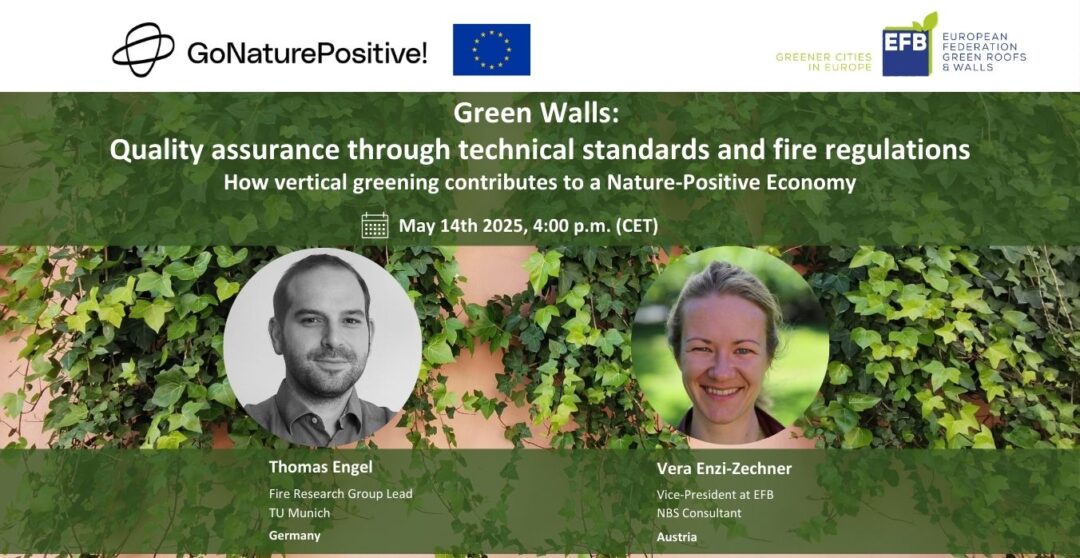Insights from the EFB Webinar “Green Walls: Quality Assurance Through Technical Standards and Fire Regulations – How Vertical Greening Contributes to a Nature Positive Economy”
On May 14, 2025, the European Federation of Green Roof and Living Wall Associations (EFB) hosted a highly engaging and informative webinar titled “Green Walls: Quality Assurance Through Technical Standards and Fire Regulations – How Vertical Greening Contributes to a Nature Positive Economy.” The event brought together experts, practitioners, and policy stakeholders to explore two crucial aspects of green walls: fire safety and the role of technical standards in supporting sustainable building practices.
Hosted by EFB and supported by GoNaturePositive! Project.
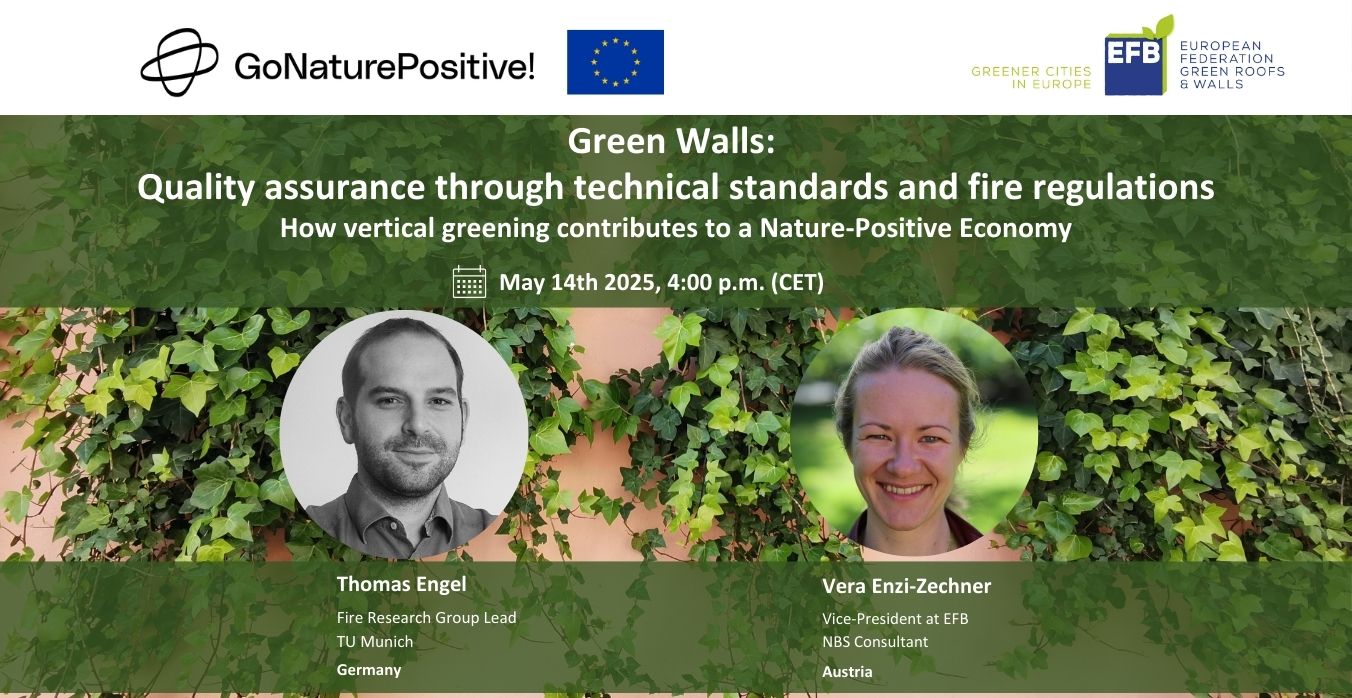
Dr. Thomas Engel, Head of the Fire Research Group at the Technical University of Munich, presented compelling findings from the research project Fire Safe Green. His focus was on assessing the fire behaviour of various vertical greening systems, particularly climbing plants on trellises – one of the most common and cost-effective types of green walls.
Key Takeaways:
- Climbing Plants and Fire Risk: Maintained climbing plants on non-combustible trellises present minimal fire risk-even in worst-case scenarios involving extremely dry vegetation.
- Moisture Content Is Critical: The most influential factor in fire behaviour is the moisture level in the plants, not the species or age.
- Compatibility with Wooden Facades: Tests showed that combining timber facades with green walls is safe when appropriate distances (e.g., 15 cm) and fire stops are maintained.
- Balcony Testing: Full-scale fire tests on balconies – another common site for green walls – revealed that properly maintained systems do not significantly contribute to vertical fire spread.
- Living Walls Require Case-by-Case Testing: Systems involving living walls with integrated irrigation and substrate layers are more complex and need system-specific fire testing and certification.
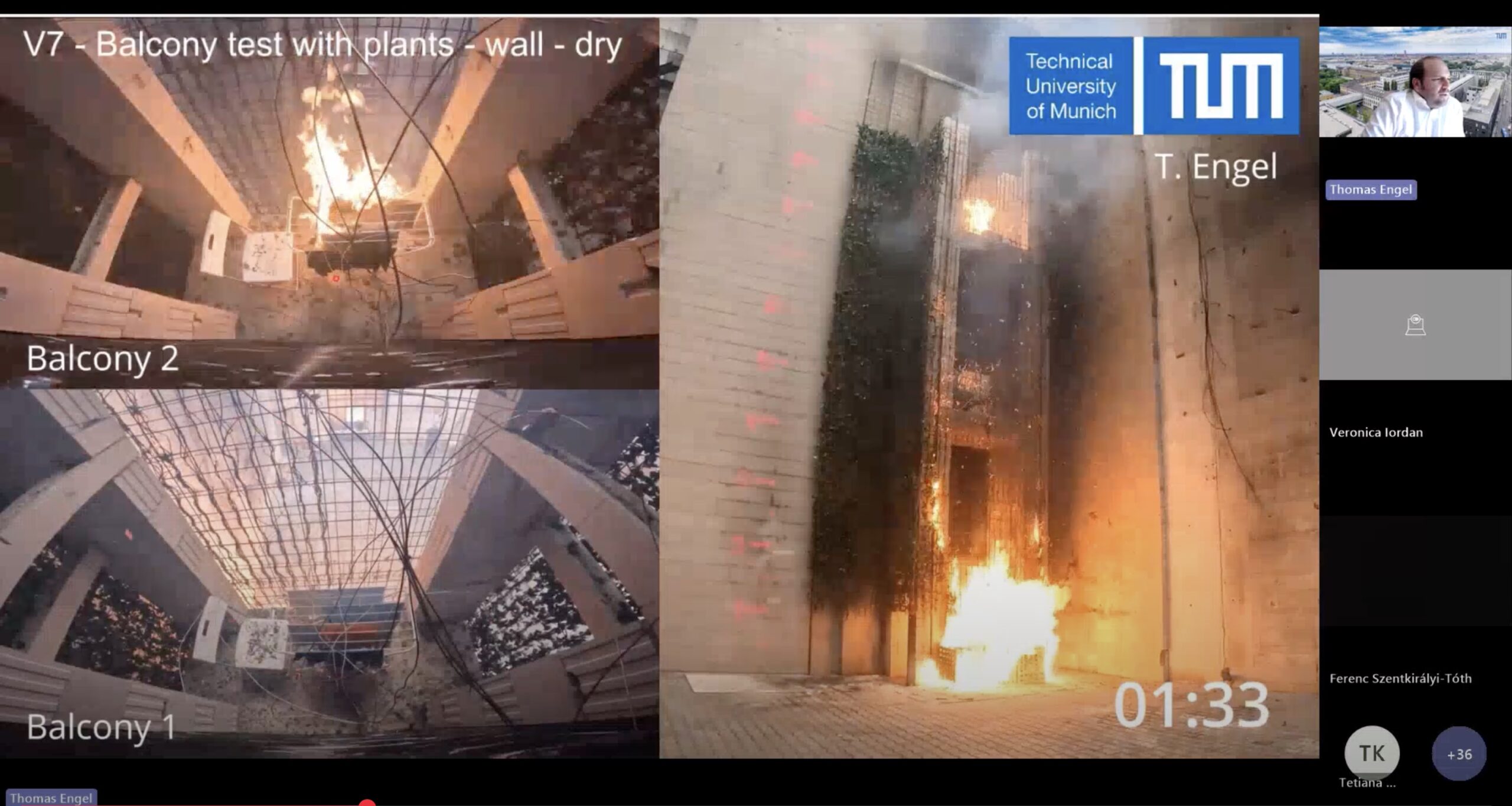
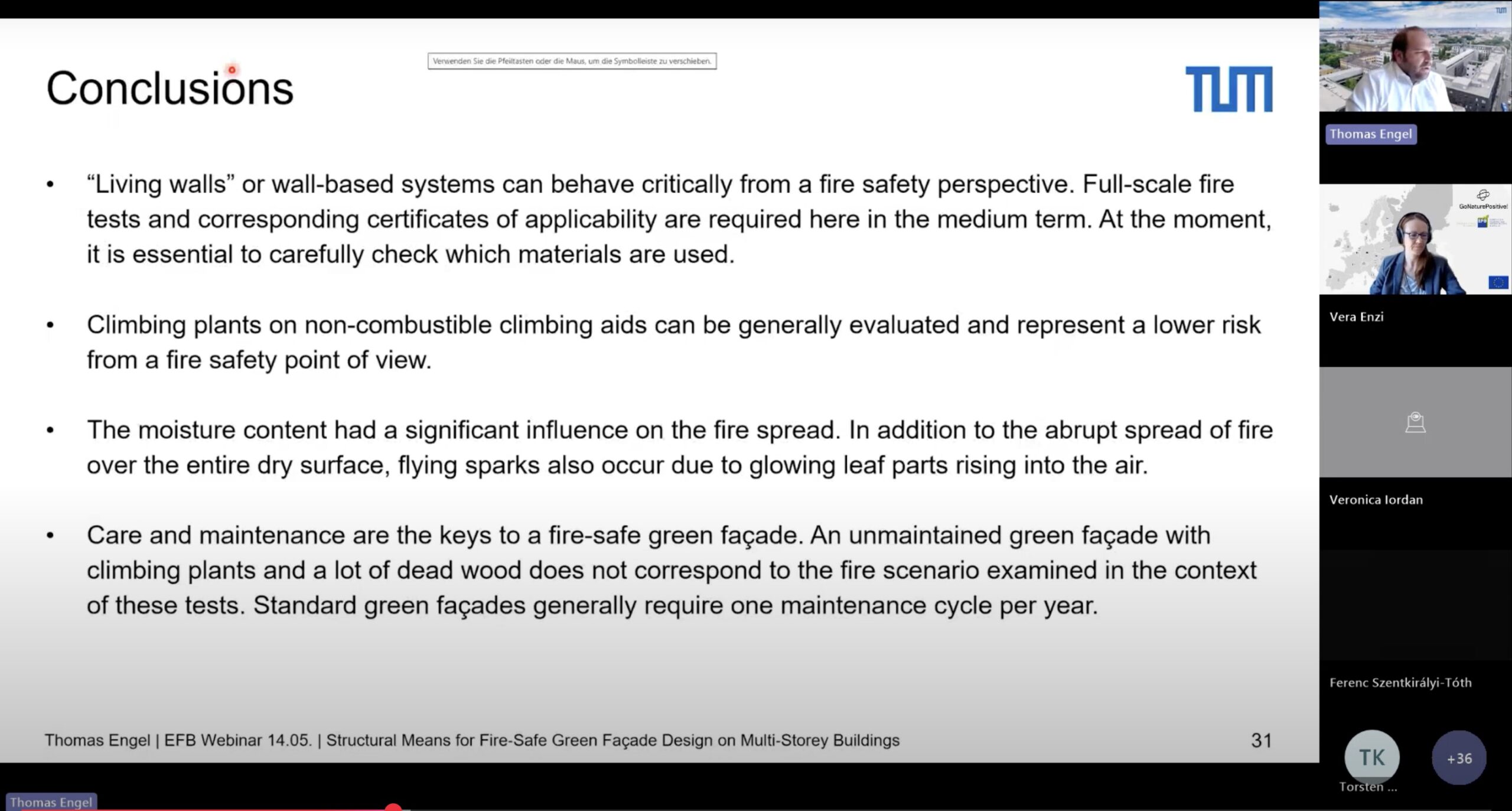
Vera Enzi-Zechner, Vice President of EFB, NBS Consultant, Business Board at GrünstattGrau, EU Correspondent at the Austrian Green Roof Association, presented an in-depth look at the Austrian Green Wall Standard (ÖNORM L 1136) and how it supports quality assurance in vertical greening.
Key Points:
- The Importance of Standards: As EU directives increasingly encourage green building technologies, standards are essential to ensure safe, high-quality implementation.
- Scope of the Austrian Standard: The standard covers the design, installation, and maintenance of various green wall systems, including climbing plants, living walls, and planter-based systems.
- Maintenance and Monitoring: It introduces service levels for maintenance, coverage targets over time, and even checklists and visual control mechanisms.
- Support for Innovation: The standard supports integration with building physics and urban energy planning – e.g., shading glass facades for energy efficiency.
- Quality Label for Practitioners: The Austrian Green Roof Association introduced a seal of quality for companies adhering to the standard, ensuring market accountability.
Vera Enzi-Zechner also presented an opportunity to sign up for GoNaturePositive! updates and learn more about the upcoming:
- Expert roundtables and policy dialogues
- Co-creation sessions and workshops
- Online webinars and public events
- Interactive formats (e.g. fishbowl, foresight)
- Feedback surveys and interviews
- Training and capacity-building opportunities
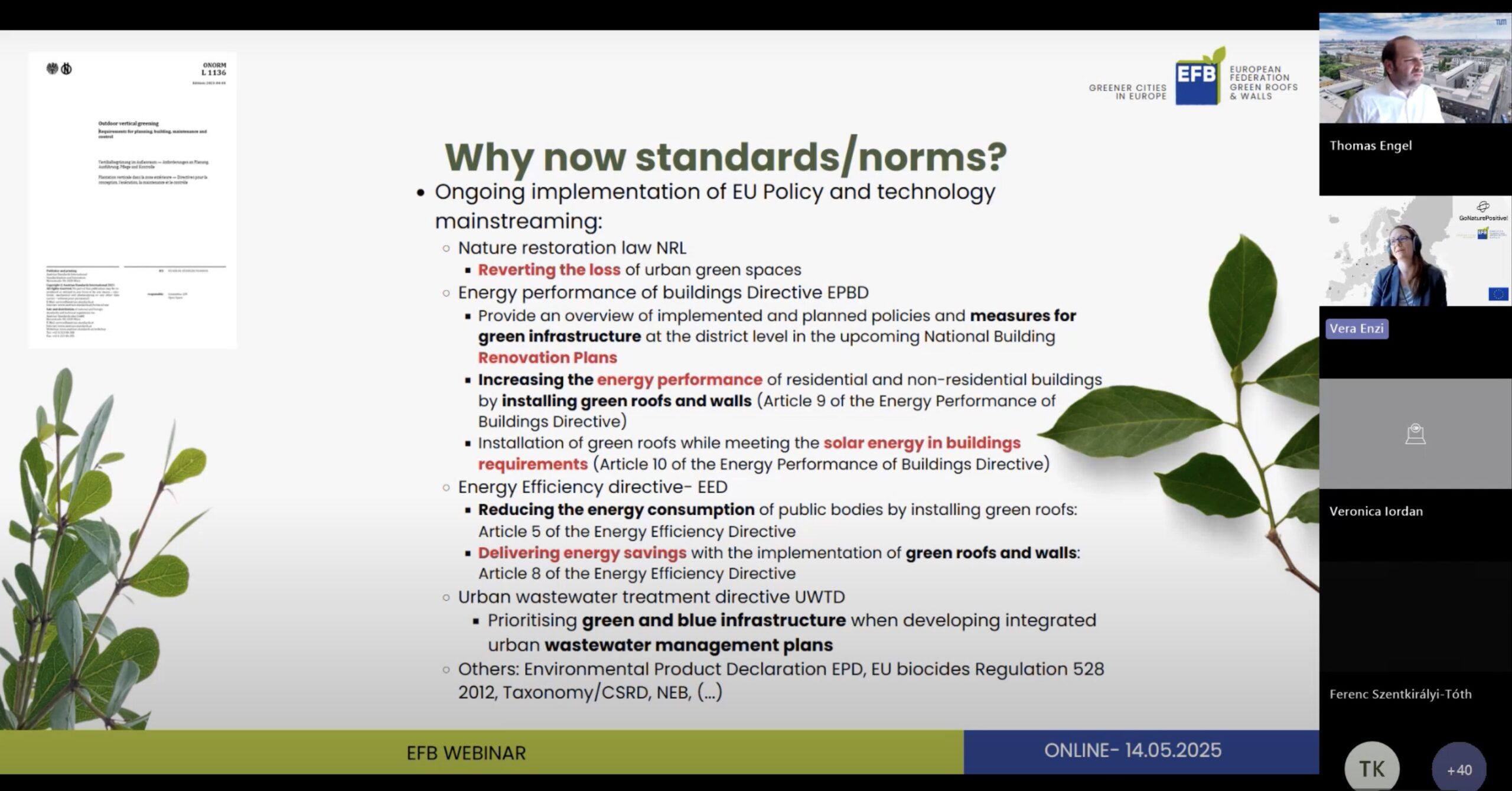
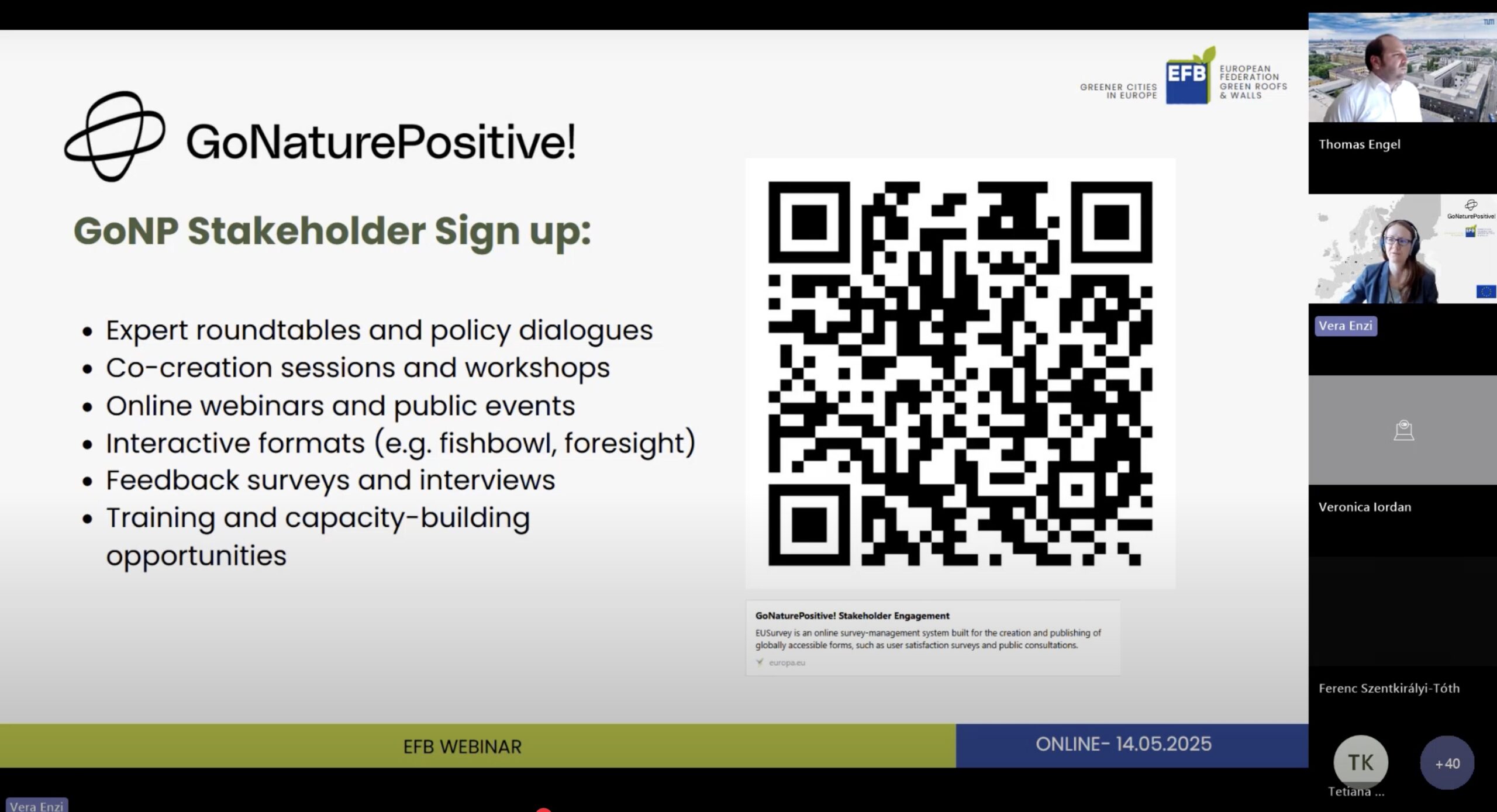
The Q&A session addressed a wide range of topics – from practical maintenance challenges to the development of EU-wide testing methodologies for fire safety. Both speakers emphasised the need for further harmonisation of standards and testing procedures across Europe to enable broader adoption and safer green wall implementations.
This webinar provided a strong case for advancing both technical and regulatory support for vertical greening in Europe. With a combination of rigorous research and practical tools, EFB and its partners are laying the foundation for a more resilient, greener, and safer built environment.
The recording of the webinar is available here: https://youtu.be/wox8nLk4WOw

